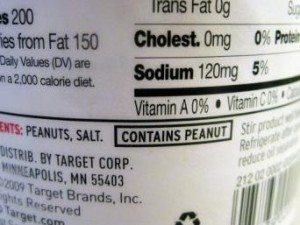The Ministry of Food Processing and Industries (MoFPI) issued the revised grant guidelines for the implementation of hazard analysis and critical control points (HACCP), International Organisation for Standardisation (ISO) 22000 and 9000, good hygiene practices (GHP), good management practices (GMP) and quality management systems during the 12th Five-year Plan period.
Under this scheme, grant-in-aid is provided to set up food testing laboratories, upgrade quality control mechanism and implement of HACCP/ISO22000/ISO14000/GHP/GMP and TQM systems in food processing units.
In this regard, proposals for financial assistance for the total quality management (TQM) system have to be submitted to the ministry. The revised guidelines will come into effect from April 1, 2014, and are aimed at motivating the food processing industry to adopt food safety and quality assurance mechanisms to enable adherence to stringent quality and hygiene norms, and thereby protect consumer health.
MoFPI also wants to prepare industry to face global competition in the post-World Trade Organisation (WTO) regime and to enhance product acceptance by overseas buyers, besides keeping the Indian industry technologically abreast of international best practices.
The grant would be reimbursement of expenditure incurred to acquire these certifications. For the consideration of the grant, the preference would be given to proposals for units processing perishable items such as fruit, vegetables, milk, meat and poultry. The reimbursement of expenditure will be released by MoFPI in one installment after obtaining necessary certification and submission of requisite documents.
Pattern of assistance
According to the notification by the ministry, all implementing agencies [namely Central and state government organisations, the Indian Institutes of Technology (IIT), universities and the private sector] would be eligible for reimbursement of 50 per cent of the cost of consultancy fees, fees charged by the certification agency, plant and machinery, technical civil works (TCW) and other expenditure towards the implementation of the TQM system in general areas subject to maximum limit of Rs 17 lakh, and 75 per cent in difficult areas subject to a maximum of Rs 22 lakh.
The difficult areas include Jammu and Kashmir, Himachal Pradesh, Uttarakhand, Sikkim, the north-eastern states, the Andaman and Nicobar Islands, Lakshadweep and Integrated Tribal Development Project (ITDP) areas of states.
Eligibility criteria
The Central and state government organisations, IITs, universities and the private sector will be eligible for reimbursement of expenditure towards the implementation of the TQM.
The scheme provides one-time reimbursement only against an industrial entrepreneur memoranda (IEM)/permanent small-scale industry (SSI) registration/industrial licence and FSSAI licence.
The applicant should not have obtained/applied for grant/subsidy from any ministry and department of the Central government, government organisations and agencies and state governments for the purpose of adoption of the TQM system.
And the expenditure incurred on the project for the TQM system after the date of receipt of application and proposal by the MoFPI for grant-in-aid will be considered for reimbursement.
Meanwhile, further, the ministry has also issued revised guidelines for setting up food testing laboratories and the upgradation of quality control and for the remaining period of 12th Five-year Plan.
Tariq Anwar, minister of state, MoFPI, informed that the ministry implemented the scheme for quality assurance, Codex standards, research and development and other promotional activities.
